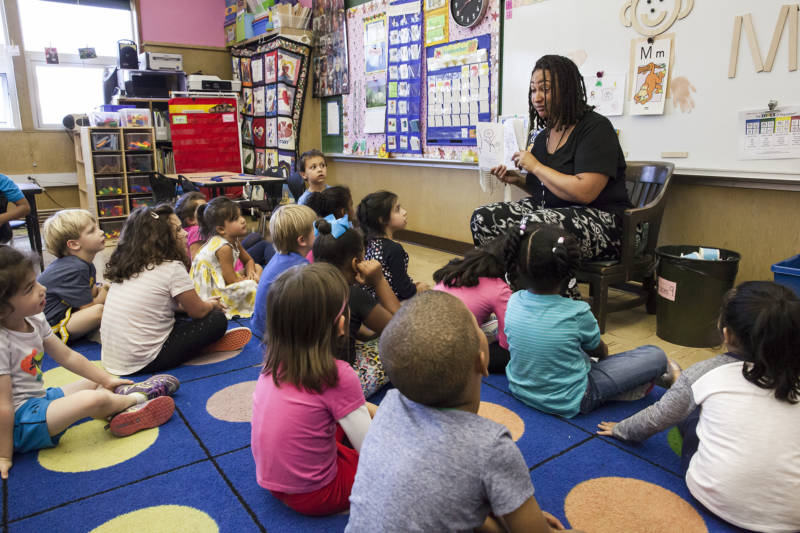The surplus is good timing for Newsom, who will face a recall election later this year fueled by anger over his handling of the pandemic, including the slow pace of school reopenings. Newsom this week has already announced a bonanza of new spending proposals, including returning $8.1 billion to taxpayers in the form of tax rebates and spending $12 billion to tackle the state's homelessness problem.
Newsom's kindergarten expansion proposal fulfills a promise that he and Democratic legislative leaders made to foot the bill for universal 4-year-old kindergarten across the state.
California's transitional kindergarten program now enrolls just over a third of the state's 4-year-olds — about 91,000 students. If Newsom's plan is approved, that would increase to about 250,000 students by 2024, according to his administration.
"We know based on research that investing early will help kids to graduate high school, get better jobs, so it just puts you on the right track," said Patricia Lozano, executive director of Early Edge California, a nonprofit that advocates for early learning. "If this happens, we're going to have the biggest universal preschool program in the nation and we're going to do it right, with the quality components in place: with small classes, with teachers who are supported."
But that expansion may also be cause for concern for some local school district officials worried about running out of teachers. Teacher retirements increased 26% during the second half of 2020, according to the California State Teachers’ Retirement System. A state survey found that 56% of those who retired cited the difficulty of teaching during the coronavirus pandemic.
Newsom’s plan would try to address that problem by giving $1.1 billion to certain underserved school districts to hire more staff, his administration said.
California does not require anyone to go to school until age 6. But school districts are required to offer kindergarten programs for students who turn 5 by Sept. 2 of each year and a two-year transitional kindergarten program for students who turn 5 by Dec. 2. Newsom’s plan would eventually make all children who turn 4 by Sept. 1 eligible — but not required — to enroll in the transitional kindergarten program, his administration said.
The plan would be rolled out in phases, making more children eligible for kindergarten each year until the plan is fully implemented in the 2024-25 school year. The Newsom administration says it will cost $2.7 billion per year by that time.
The governor’s plan would also spend $3.3 billion to expand incentive programs for teachers, including a program that gives grants of up to $20,000 to teachers who work in high-needs public schools, his administration said.
In addition, Newsom wants to pay for an after-school program and six weeks of summer school for districts with high concentrations of low-income students, children learning to speak English and kids in foster care. The programs would be available to an estimated one out of every three public school students — about 2.1 million children — up to sixth grade, at a cost of $5 billion by the time it’s fully implemented in the 2025-26 school year, his administration said.
Newsom has also said he wants to use $2.1 billion to start college savings accounts for students from low-income families and students who are learning to speak English or are in foster care. Each student's account would get $500. Children who are homeless or in foster care would get $1,000.
About 3.8 million students would be eligible for the money, which the state would start paying for next year. The Newsom administration said it would cost about $170 million to keep it going, with an estimated 320,000 new students coming in each year.

